Canada Remembers Times - 2011 Edition - Page 3
News from the Front
Many of you may have seen war correspondents on television, covering military conflicts from around the world. During the First World War, news came primarily by newspapers. In the Second World War, however, news came regularly by radio and newsreels. Today’s technology allows for live coverage of events direct from war zones via satellite.
Ever since they took their pens into battle, journalists have placed themselves in danger to report on military conflicts. Sometimes, in pursuit of their stories, journalists also become casualties of war.
The Voice of Doom
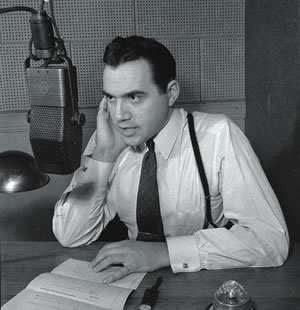
Lorne Greene in 1942.
Library and Archives Canada PA-116718.
Lorne Greene was born in Ottawa in 1915 to Russian Jewish immigrants. He joined the Canadian Broadcasting Corporation in 1939 as a radio announcer. Listeners loved his deep voice and he soon became their principal newsreader, earning the nickname "Voice of Canada." Soon after the start of the Second World War, he earned a new nickname, the "Voice of Doom," because of the gloomy war reports he had to read.
By 1942, to boost morale for troops going overseas, the government established broadcast units at Canadian bases and Greene was asked to help. He enlisted in the Royal Canadian Ordnance Corps in June 1943 and served until January 1944.
Following the war, he had a successful career in film, television and music. In 1969, he was inducted as an Officer of the Order of Canada. He passed away in 1987 and was honoured on a Canada Post stamp in 2006.
Giving Her All

Michelle Lang and General Walt Natynczyk in Afghanistan on Christmas Day 2009.
Photo courtesy of the Honourable Gary Lunn.
Michelle Lang was assigned to cover Canadian military efforts in Afghanistan for the Calgary Herald and the CanWest News Service. On December 30, 2009, hoping to find stories of civilian reconstruction, she ventured out with a team of soldiers and social workers who were helping Afghans repair damages done by war. Sadly, she and four soldiers were killed by a roadside bomb south of Kandahar City. Lang’s death at the age of 34, the first Canadian journalist to die in Afghanistan, was felt at home and in newsrooms across the world.
Lang and the four soldiers were repatriated back to Canada, and travelled the Highway of Heroes in honour of their ultimate sacrifice.
Journalists who risk their lives reporting alongside the men and women of the Canadian Forces should not be forgotten.
The War Correspondent who Became Premier
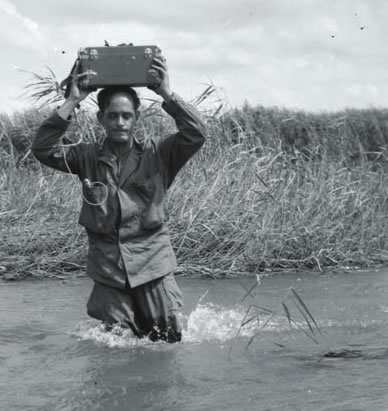
René Lévesque in Korea, 1951.
Library and Archives Canada C-077793
René Lévesque was born in Campbellton, New Brunswick, in 1922 and was raised in New Carlisle, Quebec. He studied at Laval University, prior to becoming a liaison officer and a European war correspondent for the U.S. Army during the Second World War.
Lévesque joined Radio-Canada International in 1946. He again served as a war correspondent during the Korean War.
He turned down an opportunity to work as a journalist in the United States, deciding to stay in Quebec where he hosted a very popular TV show. Lévesque later entered politics, becoming the 23rd Premier of Quebec in 1976.
Agent 50 in China
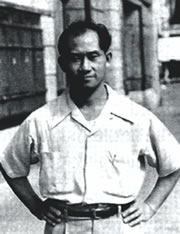
Bill Chong.
Photo courtesy of the Chinese Canadian Military Museum.
William "Bill" Chong was born in Vancouver in 1911. While visiting his sister in Hong Kong, he was taken prisoner when the Japanese attacked in December 1941. However, he escaped to China and joined the British Military Intelligence Section 9 (MI9). Known as Agent 50, he served with an intelligence unit, under dangerous and hostile conditions.
From 1942 to 1945, Chong travelled alone in China, dressed as a peasant, avoiding bandits and enemies. His mission was to bring escapees from occupied territories and deliver medical supplies. His courage was recognized with the British Empire Medal.
Chinese Canadian VeteransRecognized at Last
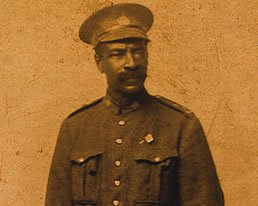
Private Jeremiah "Jerry" Jones.
Public Domain
During the First World War, most Black Canadians serving in the army did so in support roles behind the front lines. One who did serve in actual combat was Jeremiah Jones of Truro, Nova Scotia. In his mid 50s, Jones lied about his age and enlisted in 1916.
At the Battle of Vimy Ridge, he single-handedly captured a German machine gun post. He marched the survivors, who carried their heavy machine gun, back to the Allied lines. Impressed with his courage, Jones’ commanding officer stated he would recommend him for the Distinguished Conduct Medal, the second highest award for bravery after the Victoria Cross. Wounded at Vimy and at Passchendaele, Jones was discharged from service in Halifax in 1918.
Jones, who died in 1950, never did receive the medal. After years of public pressure, he was posthumously awarded the Canadian Forces Medallion for Distinguished Service at a large ceremony in 2010. Jeremiah Jones had finally received the recognition he so justly deserved.
The achievements of Black Canadians in uniformA Major Contribution
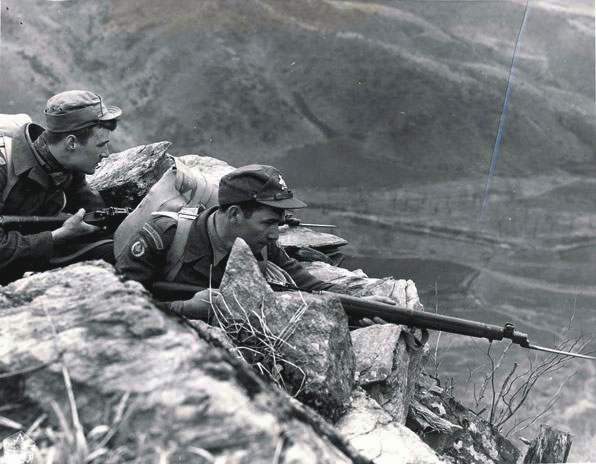
Léo Major (right) in Korea.
Photo courtesy of Jocelyn Major.
Montreal’s Léo Major enlisted in 1940, at the age of 19. He first saw action in France on D-Day with the Régiment de la Chaudière. He helped capture a German armoured vehicle on that very first day. A few days later, Major lost his left eye in combat but refused to return to Canada.
During the Battle of the Scheldt in the fall of 1944, he captured 93 prisoners but declined a decoration for bravery. On April 13 and 14, 1945, Léo Major single-handedly freed the city of Zwolle, Netherlands, from German occupation. He fooled the Germans into thinking a large attack was underway by throwing grenades and shooting his machine gun. This earned him his first Distinguished Conduct Medal (DCM).
Major volunteered again during the Korean War. In November 1951, he led a platoon that successfully repelled a massive enemy attack on Hill 355, for which he received his second DCM. Léo Major is the only soldier to be awarded DCMs in two wars.
- Date modified: